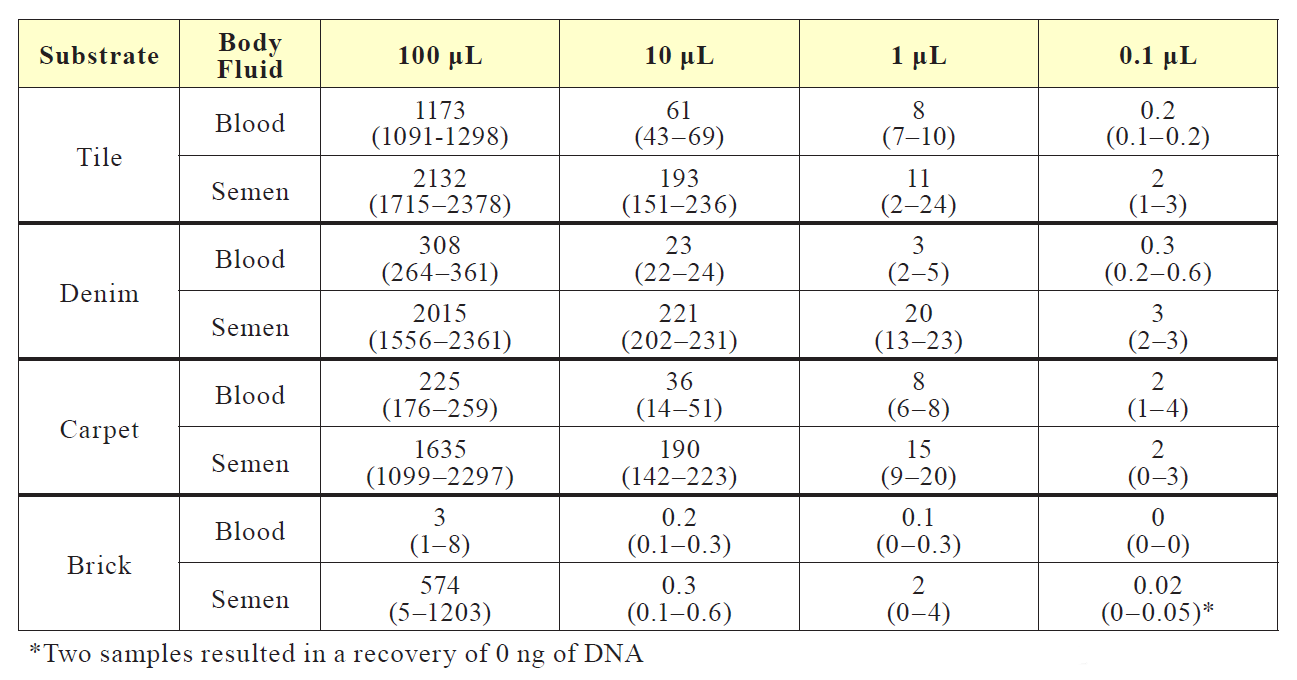
Boston - Blood and Semen on Denim Carpet Tile and Brick
Objective: In this phase of the study, blood and semen was spotted onto different substrates in decreasing volumes (100, 10, 1 and 0.1 microliters). The substrates included denim, carpet, tile and brick. The M-Vac was used to collect from these surfaces and the results were quantified.
Methods: Each substrate was spotted with the appropriate amount of blood or semen. The M-Vac was used to collect from each test substrate. The M-Vac collections were filtered using 0.45 micrometer Durapore membrane. The Durapore membrane was cut into small pieces and placed into a 2 mL microcentrifuge tube.
Extraction/Analysis: DNA extraction was done using QIAamp Investigator extraction protocol. Final extract volume was 20 microliters. DNA quantification was done with Quantifiler Duo Quantification Kit.
Results: The results for tile, denim and carpet for blood were in line with other phases of the overall study. The result with brick were of particular interest since brick is a very difficult surface to collect DNA. The results with blood on brick were significantly lower than with the other substrates. There were no yields with the 0.1 microliter spot and one false negative with the 1 microliter spot. With semen, the collection results were, in general, large in comparison with blood. There were large discrepancies in yield. They were attributed to the side of the brick that was used. Some of the spotting was on the ?glossy? side. The side that was finished and other spotting was done on the rough, unfinished side. Finally, it should be noted that neither taping nor swabbing of the brick were deemed practical or feasible because the brick caused fraying with the swab and loss of adhesiveness of the tape on contact.

Conclusions: The results indicate that the M-Vac may be a viable method for collecting biological materials from rough or porous surfaces.
Acknowledgements: This research was conducted by Lena E. Gunn at Boston University School of Medicine as part of a thesis. It was published Amanda D. Garrett, David J. Patlak, Lena E. Gunn, Amy N. Brodeur and Catherine M. Grgicak in the Journal of Forensic Identification 429-448/64 (5), 2014. The paper is available upon request.